‘Fasten your seatbelts, Ho Chi Minh City is a metropolis on the move’. So says the tourist information. If it is talking of the motorbikes then they are correct. We had thought that Hanoi was awash with bikes but Hanoi’s traffic is chickenfeed compared to Ho Chi Minh. There must be at least ten times as many bikes here. They buzz around like a swarm of locusts, clogging the streets like arterial fat, infecting the pavements rendering them unwalkable, and, once again, the pedestrian takes his life in his hands crossing the road. It is perfectly normal for two people to ride together with elegant ladies sitting side saddle. It is usual for 3 people to ride on one bike and often a family of four share two wheels. The record was six on a moped.
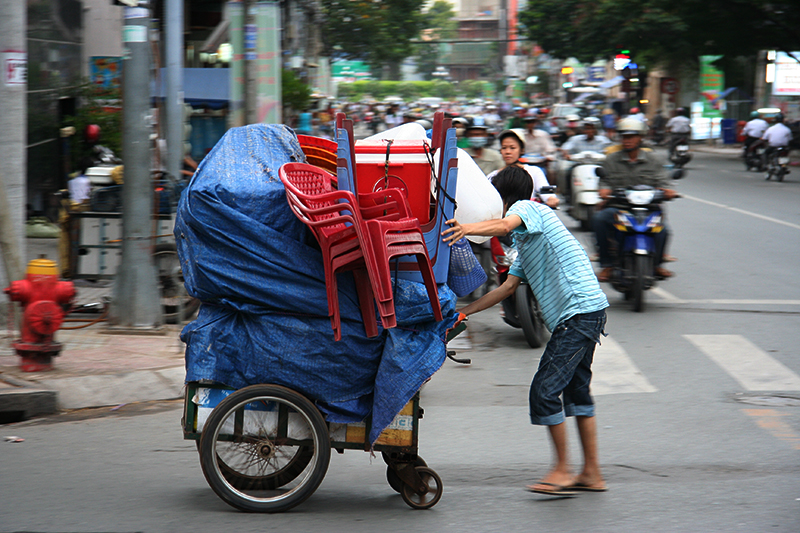 Perhaps the most surprising aspect to the whole traffic chaos is that there aren’t more accidents or incidents of road rage. On a 15-minute bike ride, we can expect to be cut up 10 times, to have bikes coming the wrong way, on our side of the road, maybe 5 times and to have traffic crossing from right to left without looking or stopping maybe 3 times. But nobody shouts or waves their fist angrily: they just slow down or stop before moving again once the road is clear. If this were London, the Accident and Emergency units of every hospital would be brought to their knees.
Perhaps the most surprising aspect to the whole traffic chaos is that there aren’t more accidents or incidents of road rage. On a 15-minute bike ride, we can expect to be cut up 10 times, to have bikes coming the wrong way, on our side of the road, maybe 5 times and to have traffic crossing from right to left without looking or stopping maybe 3 times. But nobody shouts or waves their fist angrily: they just slow down or stop before moving again once the road is clear. If this were London, the Accident and Emergency units of every hospital would be brought to their knees.
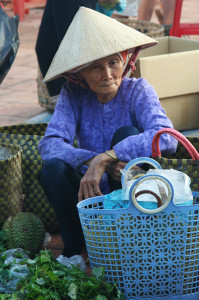 Another aspect, not just of this city but encompassing the whole of Vietnam, is that everyone is a millionaire. You need 20,000 Vietnamese Dong to exchange for US$1, so 1,000,000 Dong is equivalent to US$50. After almost a month wandering around the country, we still haven’t quite got our heads around the numbers so that we can find ourselves arguing vehemently over 5,000 Dong until we remember that it’s a waste of breath. Everything is pretty cheap (a beer costs around 20,000 Dong) and we can survive for a week on 5 million Dong (US$250) for both of us excluding travelling. So we pay cash for everything we can especially as the use of a credit card attracts a 3% surcharge. In this part of the world cash is king.
Another aspect, not just of this city but encompassing the whole of Vietnam, is that everyone is a millionaire. You need 20,000 Vietnamese Dong to exchange for US$1, so 1,000,000 Dong is equivalent to US$50. After almost a month wandering around the country, we still haven’t quite got our heads around the numbers so that we can find ourselves arguing vehemently over 5,000 Dong until we remember that it’s a waste of breath. Everything is pretty cheap (a beer costs around 20,000 Dong) and we can survive for a week on 5 million Dong (US$250) for both of us excluding travelling. So we pay cash for everything we can especially as the use of a credit card attracts a 3% surcharge. In this part of the world cash is king.
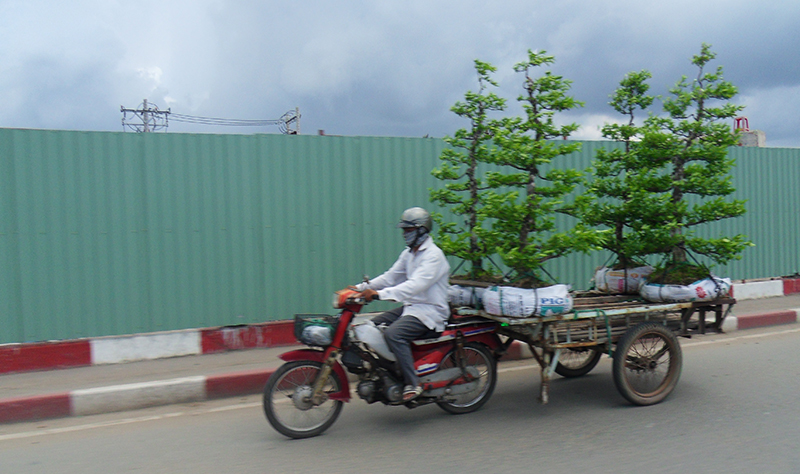 Saigon, as Ho Chi Minh City is known to all but the bureaucrats and cartographers, is a city unlike the rest of Vietnam. It still holds on to the western influence it acquired through French and American occupation. The streets are wide, commerce is constant and the people have a vitality that drives the whole country forward. Communism exists only in name as the inhabitants embrace capitalism like a teenager who has just discovered sex. It is ironic that, as the so-called communist countries take to capitalism as a means to improve the wealth of their nation, Western governments turn increasingly towards communism by introducing endless regulations, tying the country in red tape and bureaucracy and attempting to micromanage the lives of citizens like the old communist dictators. The only similarity is the political elite of both systems want the people to serve them rather than the other way around.
Saigon, as Ho Chi Minh City is known to all but the bureaucrats and cartographers, is a city unlike the rest of Vietnam. It still holds on to the western influence it acquired through French and American occupation. The streets are wide, commerce is constant and the people have a vitality that drives the whole country forward. Communism exists only in name as the inhabitants embrace capitalism like a teenager who has just discovered sex. It is ironic that, as the so-called communist countries take to capitalism as a means to improve the wealth of their nation, Western governments turn increasingly towards communism by introducing endless regulations, tying the country in red tape and bureaucracy and attempting to micromanage the lives of citizens like the old communist dictators. The only similarity is the political elite of both systems want the people to serve them rather than the other way around.
The people of Saigon have had to serve a number of masters over the years. Five hundred years ago it was a simple fishing village until it was discovered by European traders and transformed. The French were the most influential, changing the language (but not to French) and imposing Catholicism which is still embedded in most citizens. When the French left with their tails between their legs, Uncle Sam took over and Saigon became the recreational playground to the US army. Prostitution also became embedded and today the bars are replete with good time girls and their sex tourist customers – sad old (western) men.
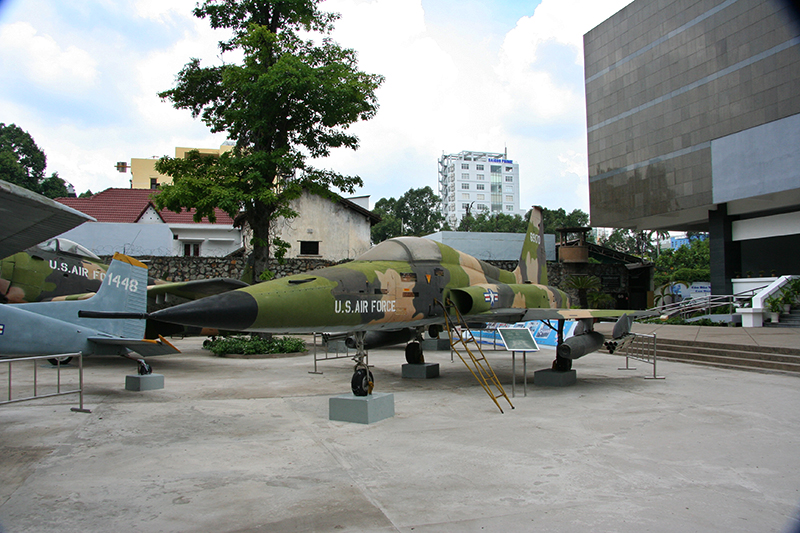 Remnants of the war with America are all over the city, not just bullet holes in the walls but complete machinery like warplanes, helicopters, tanks, rockets, all the artifacts of war and all American. We visited the War Remnants Museum which is proof, if proof were needed, that it is the victors who write history. The US military is vilified in every exhibit and the valiant, self sacrifice of the heroic Vietnamese people who threw off the yoke of the colonialist, imperialist, decadent forces of occupation were praised at every opportunity. Graphic pictures of US atrocities took up an entire section and, equal space was dedicated to the use of defoliants (napalm, agent orange and phosphorous) on the people and the land. Reconstructions of the prisons in which captured Viet Cong were incarcerated and the treatment they received at the hands of their gaolers also took up a sizeable space. The whole tone of the exhibition was too propagandist to hit hard (unlike the Museum of the Massacre in Nanjing) but still the photographs of the victims of the war was heartbreaking.
Remnants of the war with America are all over the city, not just bullet holes in the walls but complete machinery like warplanes, helicopters, tanks, rockets, all the artifacts of war and all American. We visited the War Remnants Museum which is proof, if proof were needed, that it is the victors who write history. The US military is vilified in every exhibit and the valiant, self sacrifice of the heroic Vietnamese people who threw off the yoke of the colonialist, imperialist, decadent forces of occupation were praised at every opportunity. Graphic pictures of US atrocities took up an entire section and, equal space was dedicated to the use of defoliants (napalm, agent orange and phosphorous) on the people and the land. Reconstructions of the prisons in which captured Viet Cong were incarcerated and the treatment they received at the hands of their gaolers also took up a sizeable space. The whole tone of the exhibition was too propagandist to hit hard (unlike the Museum of the Massacre in Nanjing) but still the photographs of the victims of the war was heartbreaking.
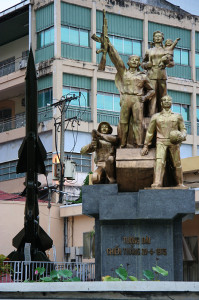 We also stopped off at the Reunification Palace that used to be South Vietnam’s Presidential Palace. The Communist tanks crashed through the gates of this building on 30th April 1975 as Saigon surrendered to the North and it is now something of a time warp having been left exactly as it was on that momentous day.
We also stopped off at the Reunification Palace that used to be South Vietnam’s Presidential Palace. The Communist tanks crashed through the gates of this building on 30th April 1975 as Saigon surrendered to the North and it is now something of a time warp having been left exactly as it was on that momentous day.
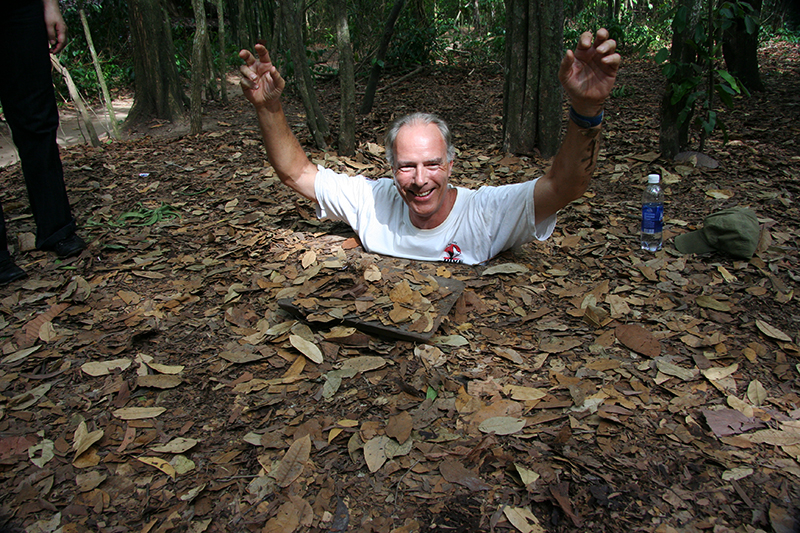 To conclude our war education we visited the Viet Cong tunnel network at a place called Cu Chi only 30 km from Saigon. At its height, the tunnel network stretched from the Cambodian border all the way to Saigon and, at Cu Chi alone there were 250km of tunnels that wove and interconnected in a seemingly random fashion making it almost impossible to close down. So much so that, after ineffective ground operations against the system, The Americans turned their artillery and bombers on the area transforming it into a moonscape.
To conclude our war education we visited the Viet Cong tunnel network at a place called Cu Chi only 30 km from Saigon. At its height, the tunnel network stretched from the Cambodian border all the way to Saigon and, at Cu Chi alone there were 250km of tunnels that wove and interconnected in a seemingly random fashion making it almost impossible to close down. So much so that, after ineffective ground operations against the system, The Americans turned their artillery and bombers on the area transforming it into a moonscape.
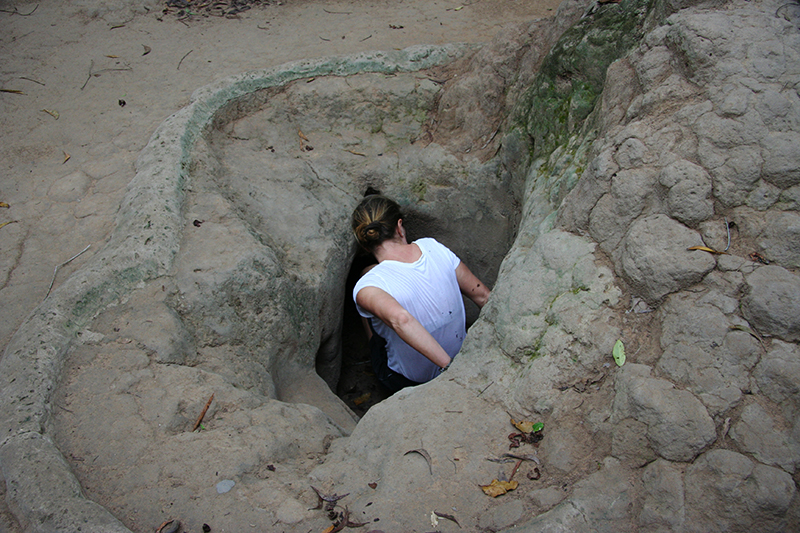 Today the landscape has been replanted with phalanxes of rubber trees and parts of the tunnel have been opened to visitors, making it possible to descend into the tunnels themselves. Parts have been widened to accommodate some of us larger people but much of it remains as it was. Access was originally through trap doors hidden in the ground and, while a svelte Debbie could fit into the opening, I could not get my chest through it. It was a similar story inside the tunnels, Debbie could walk in a crouch but I had to crawl on my hands and knees. It was a hot, sweaty, claustrophobic and airless place in which the VC lived for weeks on end with no access to sunlight and in conditions that were basic (to put it mildly).
Today the landscape has been replanted with phalanxes of rubber trees and parts of the tunnel have been opened to visitors, making it possible to descend into the tunnels themselves. Parts have been widened to accommodate some of us larger people but much of it remains as it was. Access was originally through trap doors hidden in the ground and, while a svelte Debbie could fit into the opening, I could not get my chest through it. It was a similar story inside the tunnels, Debbie could walk in a crouch but I had to crawl on my hands and knees. It was a hot, sweaty, claustrophobic and airless place in which the VC lived for weeks on end with no access to sunlight and in conditions that were basic (to put it mildly).
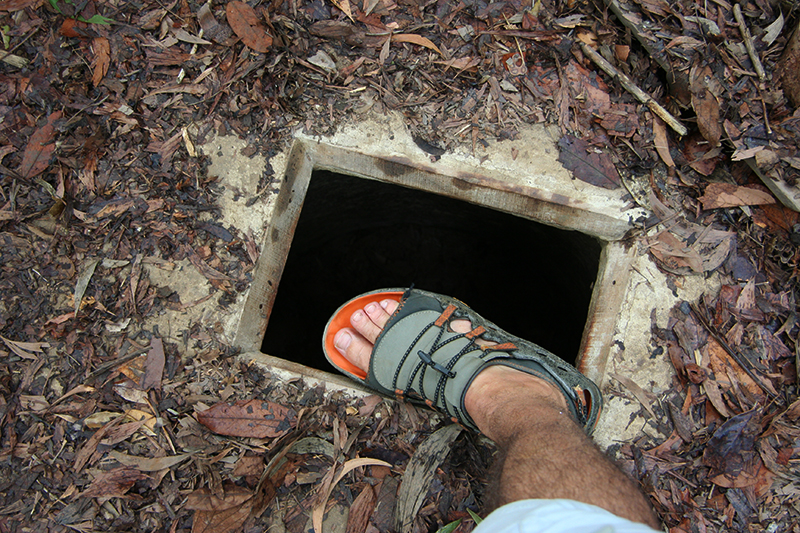 Sometimes the occupants managed to get a bit of rice to eat or the rations from a dead enemy soldier but, mostly, they lived on a diet of tea and tree root they call tapioca. I tried some. It was tasteless with a texture of soft, over cooked vegetable but it swelled inside the belly to take away any appetite. I suppose that’s how they managed to fit into the tunnels. Overall, we certainly gained an emphatic appreciation of what it was like to live underground.
Sometimes the occupants managed to get a bit of rice to eat or the rations from a dead enemy soldier but, mostly, they lived on a diet of tea and tree root they call tapioca. I tried some. It was tasteless with a texture of soft, over cooked vegetable but it swelled inside the belly to take away any appetite. I suppose that’s how they managed to fit into the tunnels. Overall, we certainly gained an emphatic appreciation of what it was like to live underground.
More excitingly, there was a rifle range where, for the appropriate fee (about US$13 for 10 bullets) we could fire live rounds on a choice of weapons from the war including machine guns. I decided upon an AK47, the revolutionary weapon of choice. It was surprisingly difficult to aim the rifle accurately as it has a straight stock (the wooden part that fits into the shoulder) so I can only assume it was designed for people with no neck. But once I had contorted myself so as to take a proper aim it was remarkably simple to hit the target 100 metres away. The first shot deafened my right ear completely as the ear defenders I was given turned out to be useless bits of plastic that gave no protection whatsoever. It took 5 days before my hearing returned to normal.
By this point we had had enough of war. A depressing topic at the best of times. It is still a mystery as to how the world’s premier superpower, with all of its mighty military muscle, managed to lose a war against one of the smallest and poorest nations on earth. But the record of US overseas campaigns is woeful.
However, as far as the people of Saigon are concerned, they are too busy making money to worry about what happened 30 years ago and, economically at least, they are now best friends with their past enemy.
We decided to skip the city for a couple of days to visit the small hamlet of Ho Tram, on the eastern coast near a town called Long Hai. We thought that taking the Hydrofoil down the Saigon River and across the sea to our destination would be fun so we arrived at the river station in time to purchase our tickets. Not surprisingly, as it was a weekend and, therefore, the time of heaviest demand, the Hydrofoil was cancelled for the next two days. And why not, it is, after all, run by a government.
So we crammed ourselves into a taxi with 5 others and set off on an uncomfortable 140km journey that took two and a half hours. Once we arrived at the other end of the hydrofoil station, we had to take another car to get to our hotel which was positioned in the middle of nowhere on a deserted beach known as Back Beach. We spent a day and a half relaxing; reading, and walking the shoreline.
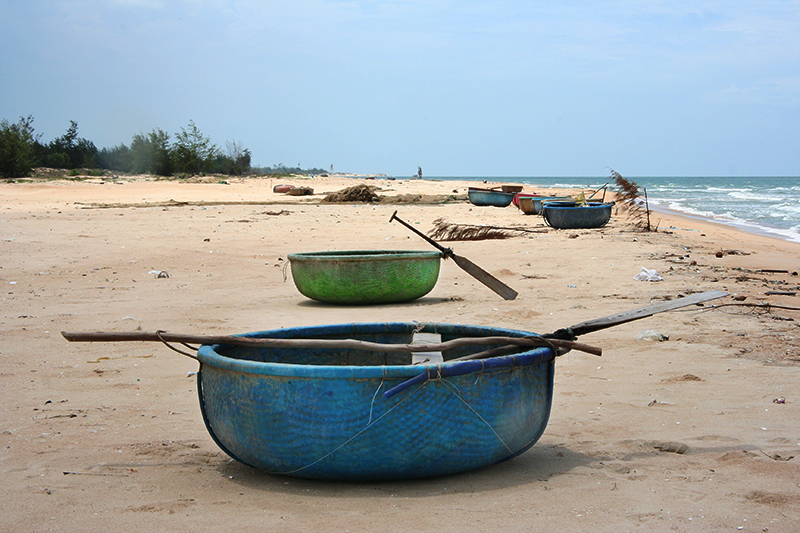 The sand was fine and soft, imbued with a slight red tinge that made it look as if it had been coloured with magnolia and the sea was fresh pea green. With gentle rollers that invaded the shore in rows of white topped waves that came all the way from Indonesia, it would have been a glorious stretch of sand lined on one side by the East China Sea and swaying palm trees on the other had it not been for the rubbish. It covered much of the sand and I reckon it would be possible to find anything we wanted if we searched long enough. Food? No problem: there were dead and discarded fish everywhere. Plus wood to cook it. Clothing? No problem: we could cover ourselves with everything from footwear, shorts, skirts, dresses and hats. There was enough wood, tarpaulin and bind to construct a very agreeable shelter. And all for nothing! It reminded me of the A.A. Milne poem ‘Jonathan Jo’:
The sand was fine and soft, imbued with a slight red tinge that made it look as if it had been coloured with magnolia and the sea was fresh pea green. With gentle rollers that invaded the shore in rows of white topped waves that came all the way from Indonesia, it would have been a glorious stretch of sand lined on one side by the East China Sea and swaying palm trees on the other had it not been for the rubbish. It covered much of the sand and I reckon it would be possible to find anything we wanted if we searched long enough. Food? No problem: there were dead and discarded fish everywhere. Plus wood to cook it. Clothing? No problem: we could cover ourselves with everything from footwear, shorts, skirts, dresses and hats. There was enough wood, tarpaulin and bind to construct a very agreeable shelter. And all for nothing! It reminded me of the A.A. Milne poem ‘Jonathan Jo’:
Jonathan Jo had a mouth like an O
And a wheelbarrow full of surprises,
If you wanted a bat, or a ball, or anything at all
He had it, whatever the size is.
The local fishermen went to sea in little circular boats similar to coracles. Obviously a Welsh influence. We could see them bobbing about on top of the water, with only a paddle for propulsion, battling the waves and the inappropriate design of their craft to reach their desired fishing spot. How on earth they are still fishing with such unsuitable ‘boats’ is a mystery – we haven’t seen anything like it anywhere else.
Others are ‘sweeping’ the shallows with long nets that have two wooden poles, one for each hand, and a rope that attaches to the waist. They dig the net into the sand and drag it by stepping backwards through the sea floor capturing tiny shells. These are then emptied into large, waist high sacks to be carted off on bikes. We did not discover what purpose these little shells were fulfilling but we guessed that they may be used in cosmetics to provide shine and glisten.
At the end of our short stay, we again attempted to catch the hydrofoil back to Saigon. The good news was that it was running again but, the bad news was that there were no tickets. Ho hum, another taxi ride beckoned. Who would want to travel the Saigon River anyway?
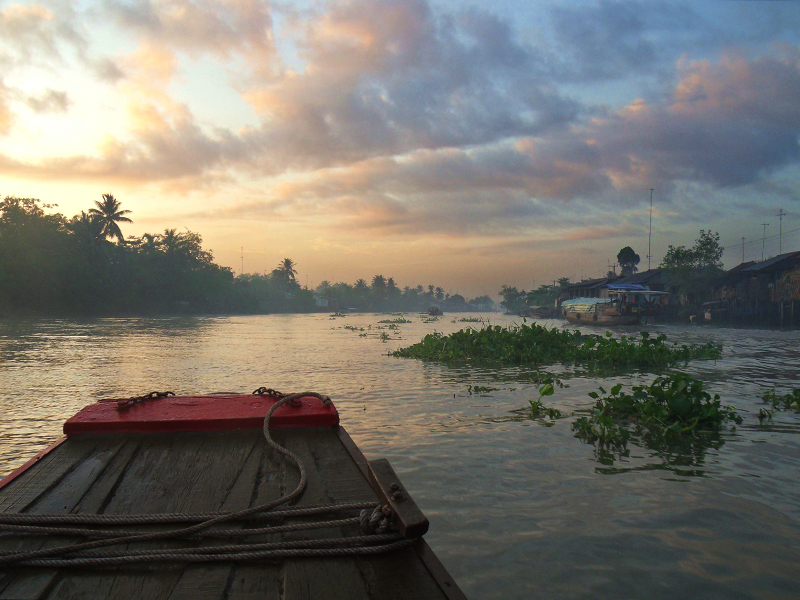 A quick hour’s turnaround in the city and we were off for 3 days to explore the Mekong Delta. Anyone who thought that the Mekong (Mekon, ed!) was simply Dan Dare’s arch enemy obviously doesn’t know that the mighty Mekong River flows all the way from Tibet, through Laos, Cambodia and into southernmost Vietnam. Here it splits into hundreds of little strands like the frayed end of a rope. The delta plain is lush with rice paddies and fish farms and dotted with low lying trees that stand guard around numerous small settlements and a few larger towns.
A quick hour’s turnaround in the city and we were off for 3 days to explore the Mekong Delta. Anyone who thought that the Mekong (Mekon, ed!) was simply Dan Dare’s arch enemy obviously doesn’t know that the mighty Mekong River flows all the way from Tibet, through Laos, Cambodia and into southernmost Vietnam. Here it splits into hundreds of little strands like the frayed end of a rope. The delta plain is lush with rice paddies and fish farms and dotted with low lying trees that stand guard around numerous small settlements and a few larger towns.
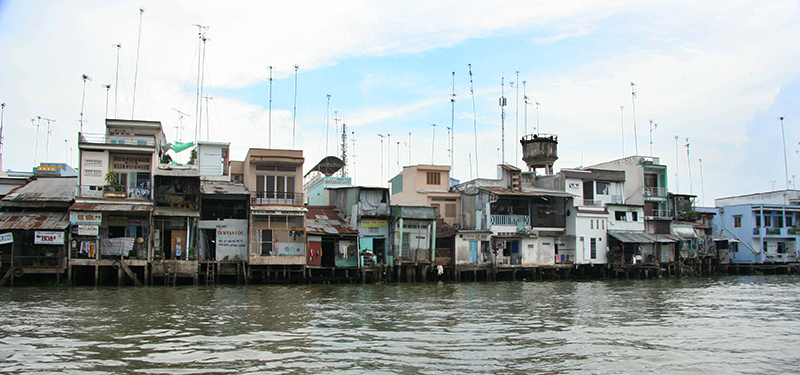 It is a vast area that is both the rice bowl of Vietnam and a water world where boats, houses and even markets float upon the endless rivers, canals and streams that criss cross the area like life giving arteries. The water is the focus of every activity in the region from lifestyle, livelihood and travel. Not that the locals treat it with much respect – the brown waters are also used as a rubbish dump, shower and sewer. I decided to give fish a miss.
It is a vast area that is both the rice bowl of Vietnam and a water world where boats, houses and even markets float upon the endless rivers, canals and streams that criss cross the area like life giving arteries. The water is the focus of every activity in the region from lifestyle, livelihood and travel. Not that the locals treat it with much respect – the brown waters are also used as a rubbish dump, shower and sewer. I decided to give fish a miss.
We had a guide, a chap called Jason who went by the somewhat inappropriate moniker of Jason Rock Star Superstar Services. He resembled neither a rock star nor a superstar but he did break into a mildly flat duet with whatever artist came on the CD or radio. At which point Debbie would advise, “Don’t give up the day job, Jason!” He didn’t understand and we didn’t have the heart to explain. But he was an enthusiastic chap who was desperate for us to enjoy our trip.
The Mekong Delta offers the opportunity to stay over on the islands in a ‘homestay’ and we took a room in the Ba Duc homestay in Cai Be town. The people were very friendly and hospitable and the room was spacious and clean. As a bonus, it had air-conditioning so that we could sleep cocooned from the heat and heavy humidity, albeit with a number of mosquitoes.
The narrow paths running along the river and canals beckoned us onto pushbikes to take a look around town, an uninspiring place that had grown up around its two markets, one on land and the other on water. At this time of day, nothing much was going on – the land market was in the process of winding down and the water market had already finished. We stood on the dock of the ferry station and watched as little boats bustled about their business whilst larger ones pushed through the ribbons of green water Hibiscus that line the banks to load up with some last minute supplies. Great big boats moved millimetrically along the river laden with so much sand, dirt or brick that their entire superstructure was under water. The river washed over the decks and jumped at the small sides of holds that was all that stood between a successful voyage and a watery grave.
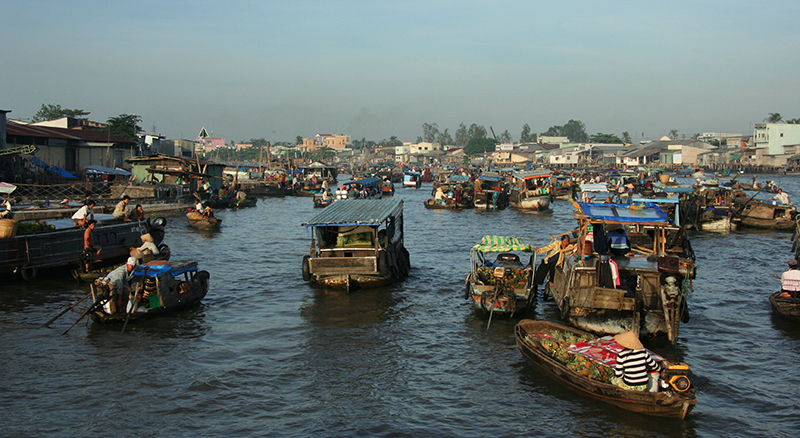 We rose at 5.00am the next morning to visit the Cai Be markets at the height of their business, taking a boat to nose around the wholesalers water market. It was filled with wooden boats laden with fruit that had been transported from Dalat in the Central Highlands, first by road to Saigon and then by waterway. The produce was sold by the kilo in sacks to other smaller boats that carried it away to local villages. The bigger boats would spend up to 6 days selling their goods before returning to Saigon for pick up another load. It was all surprisingly orderly: a small boat would approach a larger one, agree a price for however many kilos was needed, large bills would be exchanged whereupon the little boat would move on to another supplier.
We rose at 5.00am the next morning to visit the Cai Be markets at the height of their business, taking a boat to nose around the wholesalers water market. It was filled with wooden boats laden with fruit that had been transported from Dalat in the Central Highlands, first by road to Saigon and then by waterway. The produce was sold by the kilo in sacks to other smaller boats that carried it away to local villages. The bigger boats would spend up to 6 days selling their goods before returning to Saigon for pick up another load. It was all surprisingly orderly: a small boat would approach a larger one, agree a price for however many kilos was needed, large bills would be exchanged whereupon the little boat would move on to another supplier.
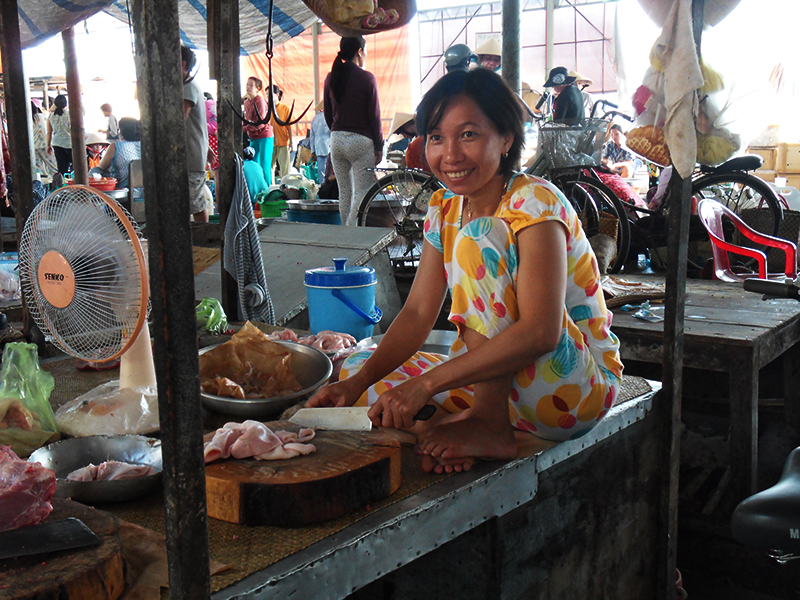 The land market was much noisier. Plenty of shouting and arm waving as female vendors tried to shift vegetables, fish and meat. Chicken and duck were slaughtered on the spot, mostly by having their throats cut (the blood can be sold separately) and even the fish and eels are selected live before being chopped up and bagged. Just about anything that moves above grass level (as well as some that don’t) can be bought dead or alive in return for a small amount of cash. If it wasn’t for the unpleasant smell, we could have spent hours walking around, absorbing the local colour and culture.
The land market was much noisier. Plenty of shouting and arm waving as female vendors tried to shift vegetables, fish and meat. Chicken and duck were slaughtered on the spot, mostly by having their throats cut (the blood can be sold separately) and even the fish and eels are selected live before being chopped up and bagged. Just about anything that moves above grass level (as well as some that don’t) can be bought dead or alive in return for a small amount of cash. If it wasn’t for the unpleasant smell, we could have spent hours walking around, absorbing the local colour and culture.
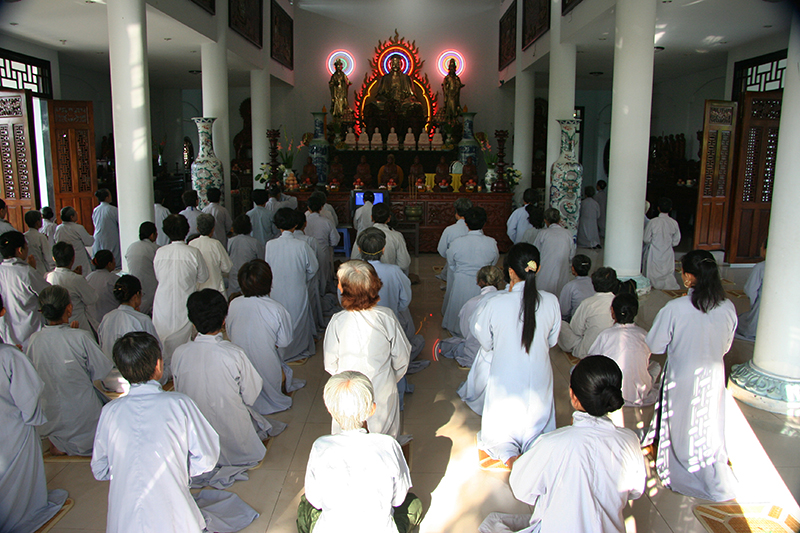 A tranquil reprieve was found close-by at the Phu Chau Pagoda, a place of Buddhist learning and worship. It was positioned in the centre of a garden filled with lush green grass and stunning flowers. Compared to the dirt and ramshackle buildings outside, it was a place of heavenly peace that was by far the most attractive place of worship that we had visited for months. The ladies of the town had gathered here for breakfast prior to a day of instruction that started with prayers and chanting. A couple of European visitors proved to be too great a distraction for many of them who neglected their religious devotions to stare at us, try out their limited English and smile toothlessly at us.
A tranquil reprieve was found close-by at the Phu Chau Pagoda, a place of Buddhist learning and worship. It was positioned in the centre of a garden filled with lush green grass and stunning flowers. Compared to the dirt and ramshackle buildings outside, it was a place of heavenly peace that was by far the most attractive place of worship that we had visited for months. The ladies of the town had gathered here for breakfast prior to a day of instruction that started with prayers and chanting. A couple of European visitors proved to be too great a distraction for many of them who neglected their religious devotions to stare at us, try out their limited English and smile toothlessly at us.
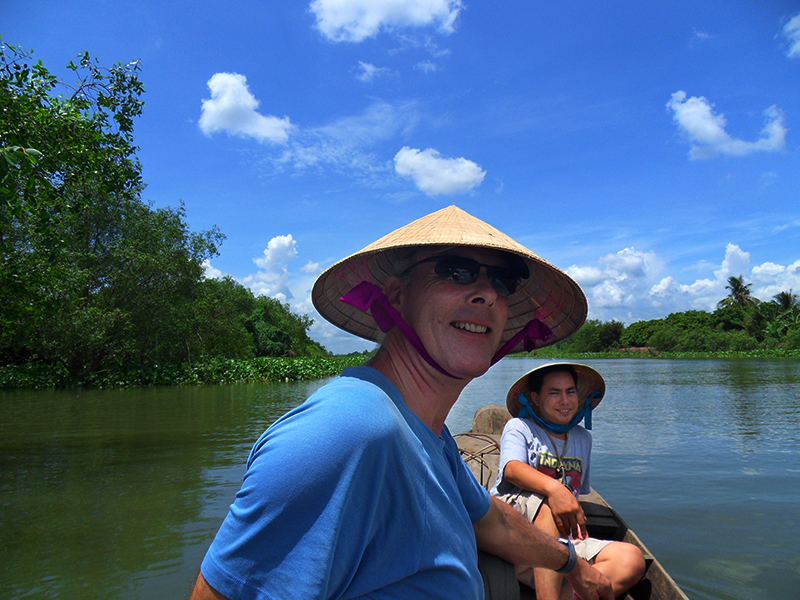 Our tour continued deeper into the Mekong when we travelled downstream both by motorboat and then by rowboat through the narrow canals that slink away from the main river. Meeting someone coming the other way involves one craft pushing into the bushes for there is insufficient room for two abreast. But it is very quiet and peaceful even if the experience is rather too hot and sweaty for a white skinned European during the heat of the day.
Our tour continued deeper into the Mekong when we travelled downstream both by motorboat and then by rowboat through the narrow canals that slink away from the main river. Meeting someone coming the other way involves one craft pushing into the bushes for there is insufficient room for two abreast. But it is very quiet and peaceful even if the experience is rather too hot and sweaty for a white skinned European during the heat of the day.
After a lunch stop at a house in the middle of Tamphong Island, we travelled further down the Ba Nam Canal to Cantho for our second night stop. It’s the epicenter of the Mekong Delta and a veritable metropolis after exploring the backwaters. As the political, economic, cultural and transportation centre of the Delta, it hums with activity and flows with tourists visiting the Mekong in a more antiseptic manner than us. It is not a desperately interesting place, as a quick recce confirmed, but, at least, we could buy a decent meal without a trace of the usual Vietnamese cuisine. Not that Vietnamese food isn’t good of course, but a bit of variety of the recognizable kind never goes amiss once in a while.
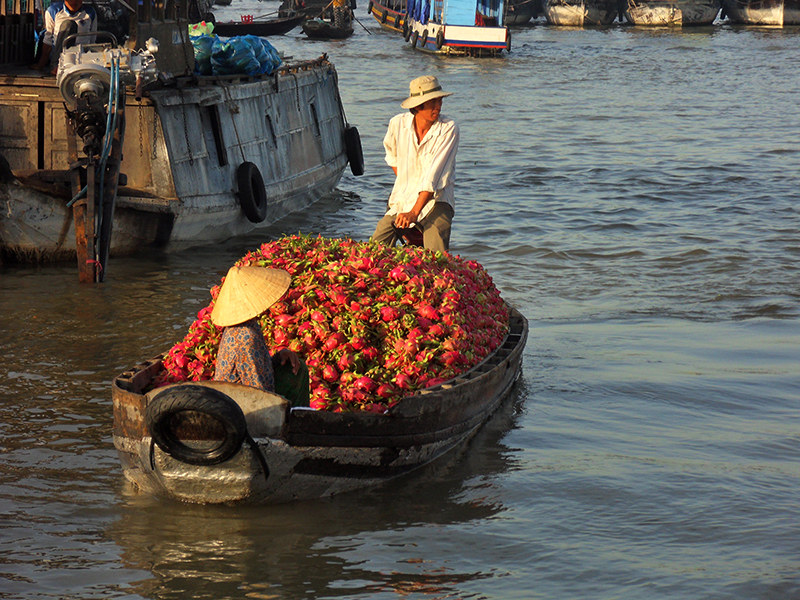 The daily clock for locals is roughly 04:30 to 20:30 (8.30pm). So to make a sortie to the largest of the Mekong floating markets we were up again at 5.00am to enjoy another boat trip as the dawn sun heaved itself above the horizon. It was much the same as the day before only with many more boats as the Cai Rang floating market stretches for over 1km along the western side of the river. We were given a pineapple (delicious) by a generous wholesaler, we bought coffee from a small boat selling breakfast to the buyers and sellers, and Debbie bought a kilo of red, prickly rambutan, that taste like lycee, for half a dollar (an acquired taste). Back on terra firma we were offered skinned python and gutted rat. Having politely declined we actually took some local fried egg baguette washed down with coffee – delicious.
The daily clock for locals is roughly 04:30 to 20:30 (8.30pm). So to make a sortie to the largest of the Mekong floating markets we were up again at 5.00am to enjoy another boat trip as the dawn sun heaved itself above the horizon. It was much the same as the day before only with many more boats as the Cai Rang floating market stretches for over 1km along the western side of the river. We were given a pineapple (delicious) by a generous wholesaler, we bought coffee from a small boat selling breakfast to the buyers and sellers, and Debbie bought a kilo of red, prickly rambutan, that taste like lycee, for half a dollar (an acquired taste). Back on terra firma we were offered skinned python and gutted rat. Having politely declined we actually took some local fried egg baguette washed down with coffee – delicious.
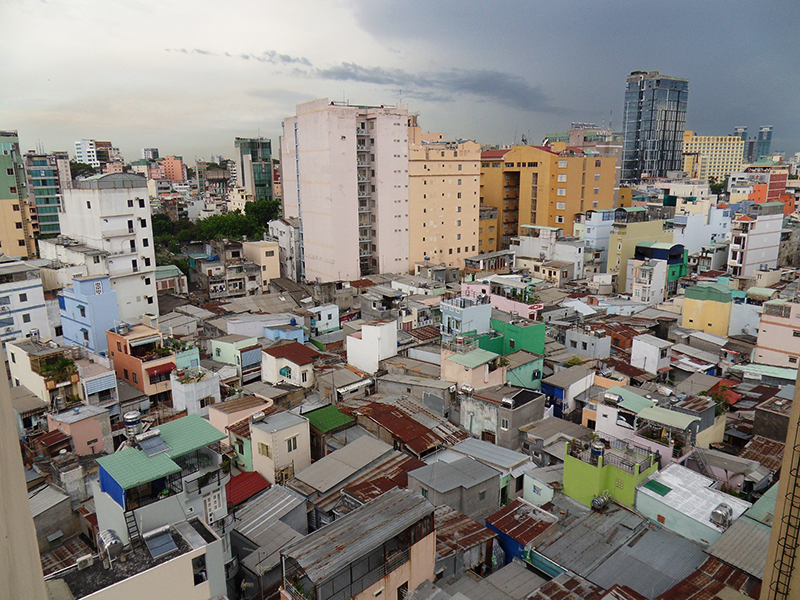 After the slow and languid boat travel our return to Saigon, was much faster, helped by traversing two grand spanking new bridges both built as gifts, one from the Japanese and another from the Australians. Everyone wants to be Vietnam’s friend now that capitalism is back in communist clothing. It’s the new war: if you cannot beat them with bombs, conquer them economically instead. Perhaps the US has won after all because a strong capitalist based economy with a growing GDP is not going to threaten the West. And it’s good for business. So, perhaps Ho Chi Minh City (Saigon) is a metropolis going places as the guide book states. Foreign investment and local entrepreneurism has combined to give the city a real boost and a buzz that other places in the country still lack.
After the slow and languid boat travel our return to Saigon, was much faster, helped by traversing two grand spanking new bridges both built as gifts, one from the Japanese and another from the Australians. Everyone wants to be Vietnam’s friend now that capitalism is back in communist clothing. It’s the new war: if you cannot beat them with bombs, conquer them economically instead. Perhaps the US has won after all because a strong capitalist based economy with a growing GDP is not going to threaten the West. And it’s good for business. So, perhaps Ho Chi Minh City (Saigon) is a metropolis going places as the guide book states. Foreign investment and local entrepreneurism has combined to give the city a real boost and a buzz that other places in the country still lack.

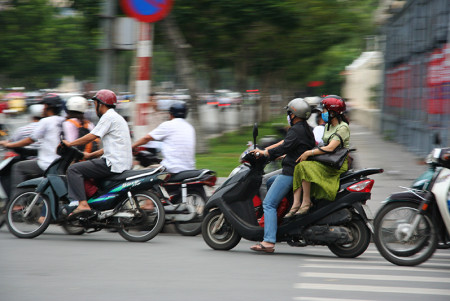
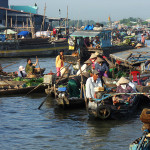
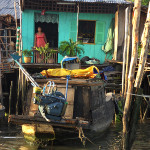
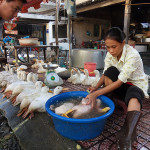
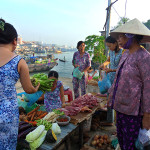
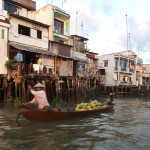
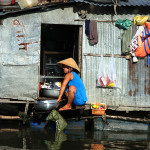
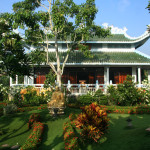
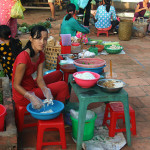
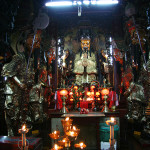
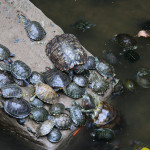
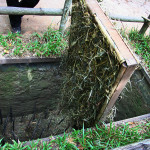
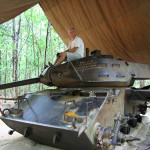
No comments yet.